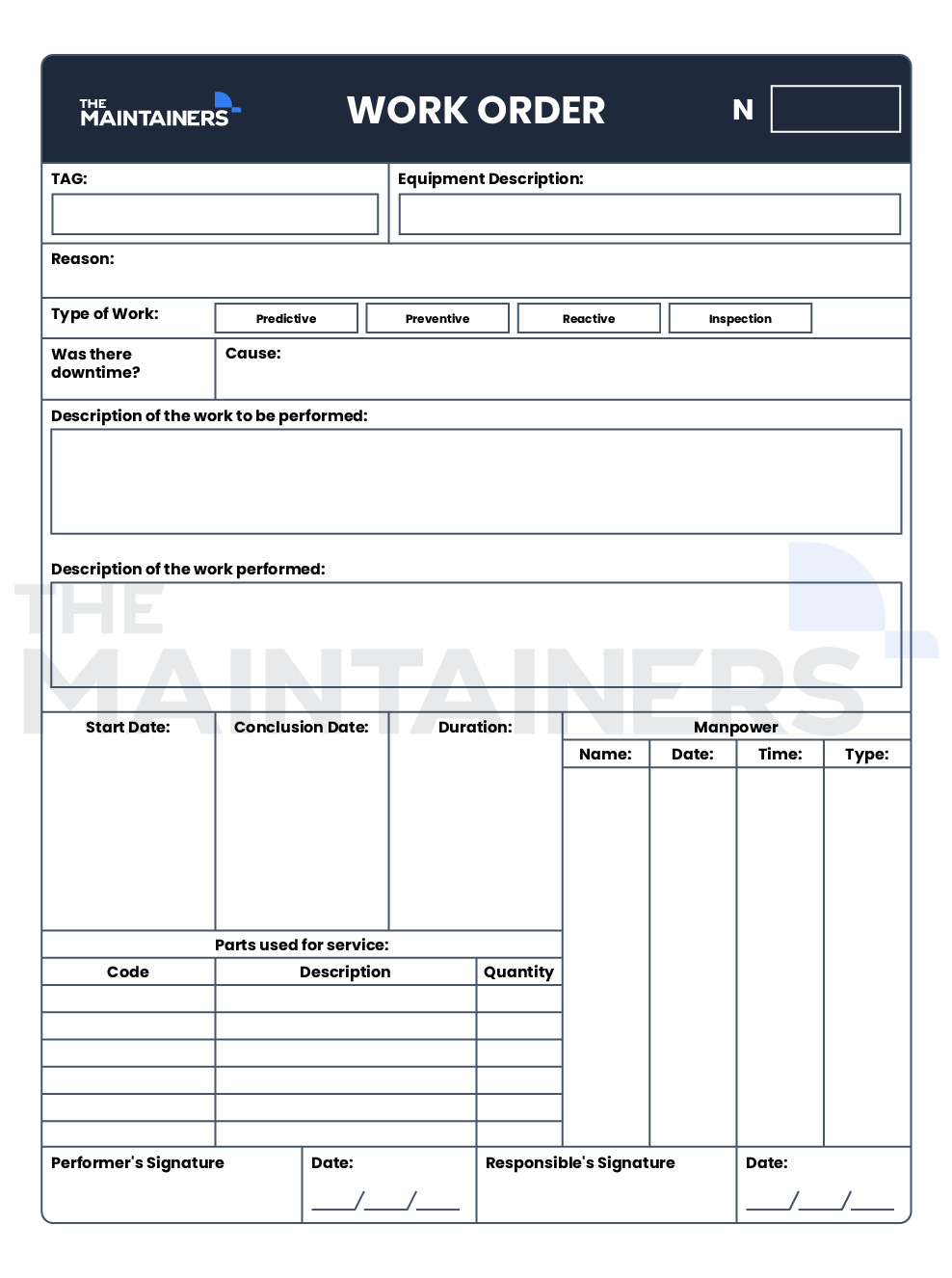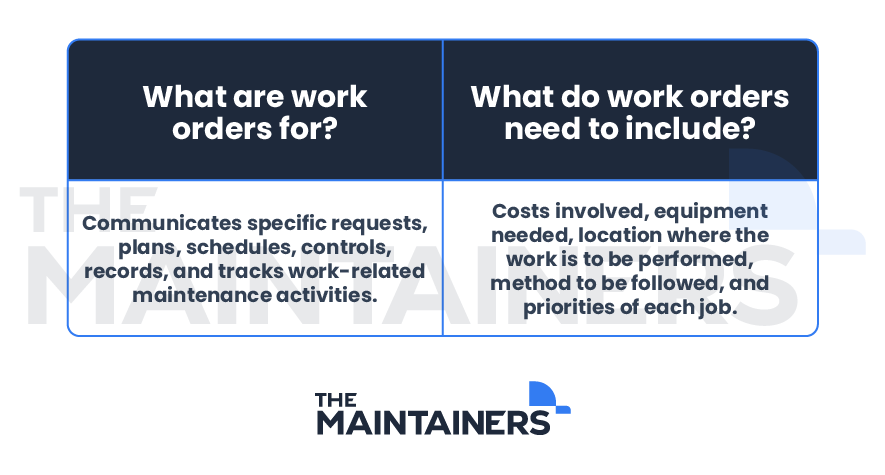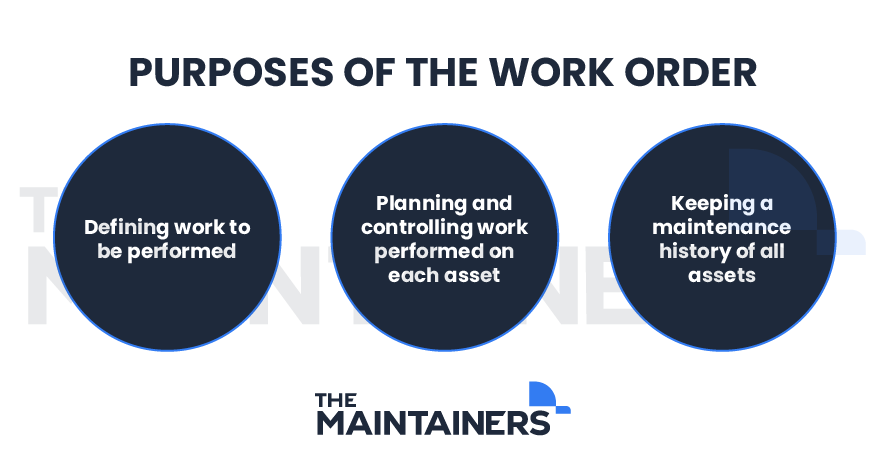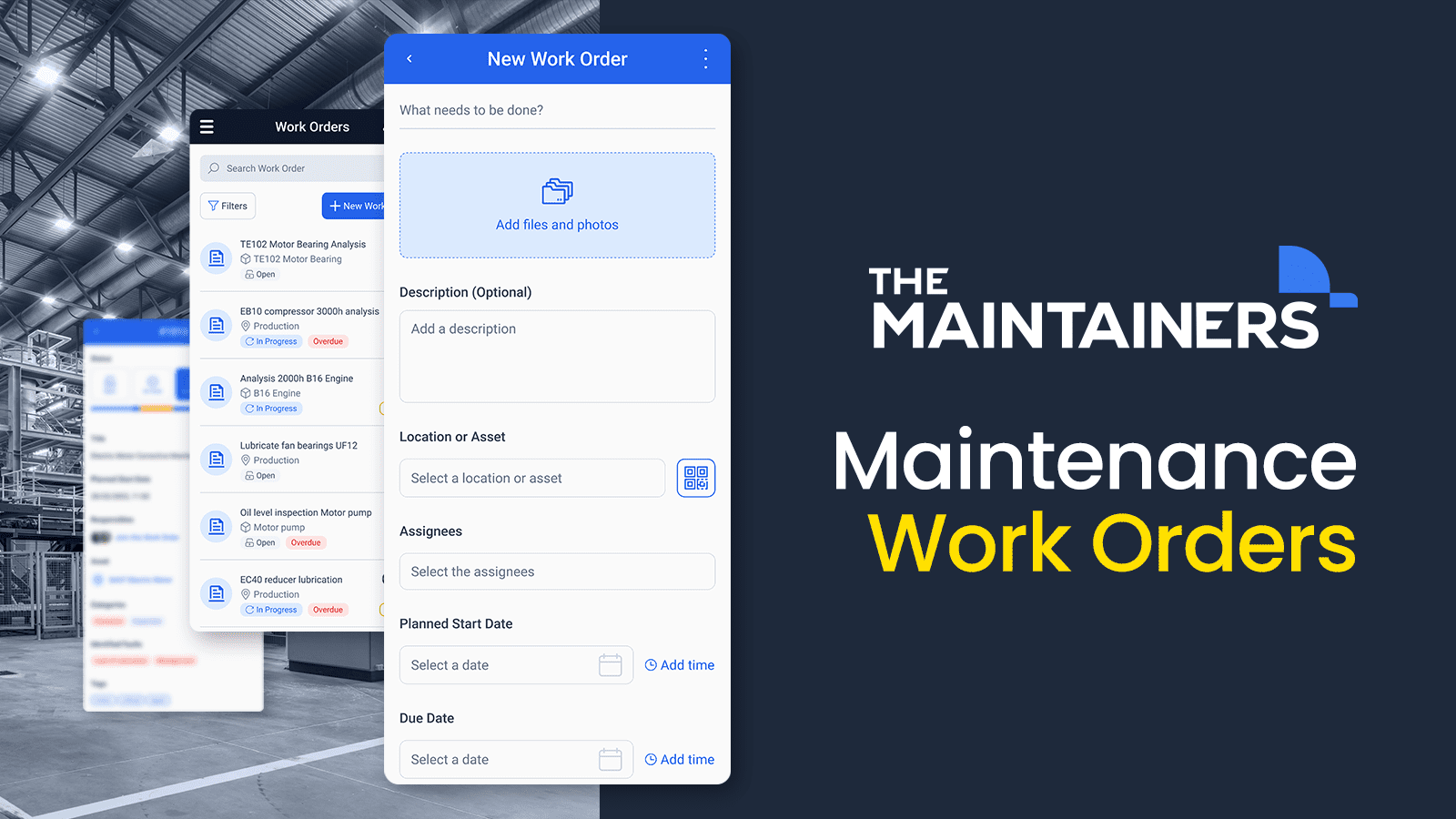A work order (WO) communicates what work is to be performed, when, where, and by what method, to all parties involved. It creates a system, enabling whoever is needed to complete the upcoming task to allocate time and resources to do so. They also serve as a source of information for all maintenance request forms.
Through each WO, there’s a formalization of the services provided by the maintenance team. It’s how requests are made to check the inspection of any part, component, or equipment.
Imagine this hypothetical situation: there’s a bearing housing that needs replacing. In this case, you can create a work order addressing the issue, including how much the replacement will cost, the priority of the job, and the most adequate technician for the activity. All of this information is gathered together in a single document, available to those who need it.
Work orders are considered an indispensable guide for the proper functioning of the maintenance sector. They also act as a historical record about occurrences, so it’s crucial that they’re filled out correctly.
Here’s an example of a maintenance work order template:

One of the most common complaints about work orders is that each job to be performed creates a large amount of paperwork. Another claim is that “it takes more time to prepare and document a work order than it does to actually do the work.” There are, however, many benefits to creating and filling out clear and complete WOs, like:
- Ensuring plant integrity and protecting investments
- Ensuring maintenance worker safety
- Complying with government regulations
- Avoiding legal problems
- Collecting information on work performed
- Recording asset performance history
All of this, of course, in addition to promoting good management principles and focusing on continuous improvement. These are some of the important reasons maintainers should support the goal of having most, if not all, work registered through a well-designed work order management system.
The WO remains in effect during all stages of the work cycle, from creation to closure; everything that happened during its execution is documented.
Essentially, a work order’s role is to communicate specific requests, plan, schedule, control, record, and track most work-related maintenance activities.
It authorizes the performance of a job, and therefore that the costs attributable to that order can be incurred. Work orders indicate the equipment needed or location where the work is to be performed, as well as the method to be followed. Finally, the work order indicates the priority of each job.

Work Order Management System
The work order isn’t just a form to be filled out, it’s a system that provides the means to request the maintenance service that needs to be planned, scheduled, executed, controlled, and recorded, through registering all the information concerning the work performed.
An efficient work order system:
- Eliminates the unnecessary and unimportant
- Establishes accountability
- Reduces errors
- Facilitates work preparation
- Expresses with great clarity what needs to be done
- Allows charging labor, materials, and outside services to the equipment owner
- Serves as an authorization document
- Records maintenance costs
- Controls performance
- Is the documentary basis of asset history
- Increases the efficiency of work groups
- Is the main gear of integrated maintenance management
There are two approaches to managing a work order system. The first is characterized by the use of work requests, which are sent to the maintenance planner, who is then responsible for generating the preventive maintenance work orders. In the industry it’s known as planned maintenance.
In the second, unplanned work that arises on a day-to-day basis is captured. The work order is created directly and sent to the planner for additional coding and entry into the CMMS software or ERP.
Work orders are – first and foremost – a maintenance management tool that, in addition to specifying the work to be performed, serves other functions like cost control and operational control of maintenance time.
Work Order Purposes
The WO fulfills three basic roles:
Definition and Authorization of the Work to be Performed
It’s the systematic selection and authorization of the work requested, with respect to the type of work, cause, location and priority.
Planning and Control of the Work to be Performed
- Define the scope of work
- Assign priority
- Provide information on scheduling, coordination, methods, materials, and labor
- Provide supervisors and maintenance technicians with work instructions and estimates of time required
- Gather information on work progress
- Record and measure the amount of work completed (results)
- Monitor the levels of personnel involved
Cumulative Maintenance History
- Develop time estimates for repetitive work
- Collect information for work optimization and failure analysis
- Measure and improve costs and performance
- Analyze costs by job, equipment and cost center
- Improve planning and scheduling

Benefits of Using Work Orders
The main advantages of work order systems are that:
- They provide an efficient means of requesting, assigning, and tracking work performed by maintenance personnel
- They provide a method of transmitting written instructions on how work is to be done
- They provide a method for estimating and accumulating actual maintenance costs by machine, facility, cost center and department, and support planning, quality and cost control issues
- They provide the data needed to prepare management reports, upon which corrective action can be taken
Streamlining Maintenance Work Orders
Ideally, you should have all assigned work covered by a formal maintenance work order process. Achieving this requires commitment from all levels of management within the facility, and will come only if the advantages of using work orders can be demonstrated.
When filled out manually, work orders can end up in the wrong sector or lost due to paper accumulation. This kind of delay impacts both the industry’s production and its management, due to the loss of information and the WO itself.
Traditional – or hand written – WOs can create a domino effect for delays, among many other problems. Because of this, an alternative is automating work order tracking, which makes the process easier and brings better results for the company.
With advancing technology, it’s now possible to streamline processes through maintenance work order software that automatically generates work orders when faults are identified in industrial equipment.
This means maintenance teams can centralize processes; they can create, access, and keep track of work orders digitally and in real time. Automation ensures more agility and productivity in the industry by improving management and controlling the budget – it also reduces the response time between sectors and production bottlenecks.
The entire maintenance team, with the help of software or a work order operating system, can and will know the right time to replace parts and components. Additionally, there’s the possibility of keeping up with the WO through QR Code readings.
It’s become clear, over the course of this article, why work orders are fundamental to organizing company processes. They’re the key to guaranteeing better results for the company and its employees.
